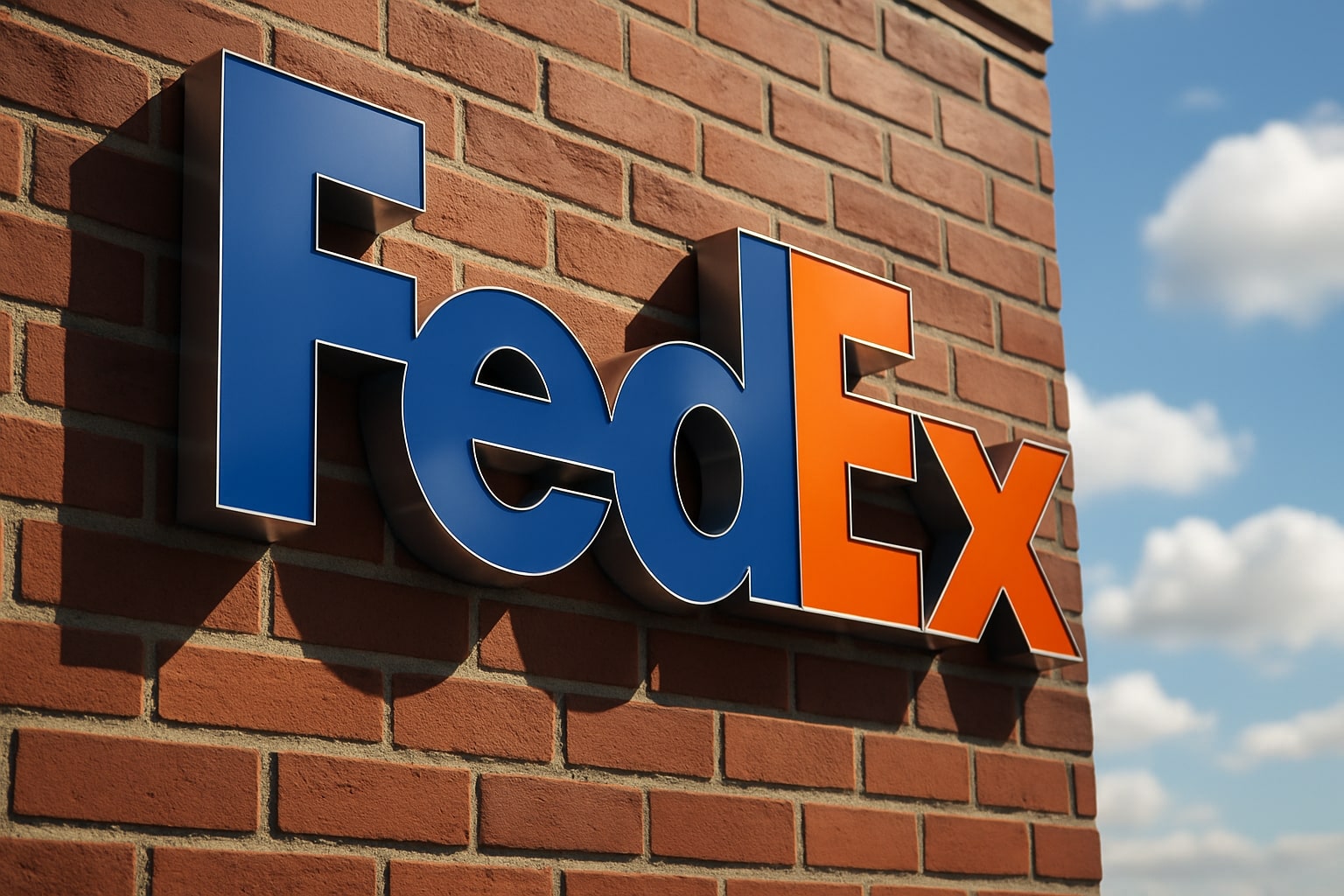
FedEx Stock Price Forecast - FDX Climbs on $22.24B Revenue Beat — Can $1B in Cost Cuts Offset Trade Pain?
FDX stock jumps 2.3% to $231.75 after earnings beat. FY26 EPS guided to $17.20–$19.00 as tariffs weigh on international volumes, but $6B savings plan boosts long-term outlook | That's TraidngNEWS
FedEx Stock (NYSE:FDX) Confronts Trade Headwinds and Cost-Cutting Realities
FedEx stock real-time chart closed at $231.75, gaining +2.32% after first-quarter earnings topped Wall Street expectations. Revenue for Q1 FY26 reached $22.24 billion, up 3.1% year-over-year, with non-GAAP EPS at $3.83, a beat of $0.22. While U.S. package volumes rose 4%, international ADV dropped 3% as new tariff rules ended the “de minimis” exemption for packages under $800. This exposed the company’s global exposure and reliance on domestic demand for growth. FedEx management reaffirmed its FY26 EPS guidance of $17.20–$19.00, but the midpoint signals flat earnings compared to last year, even with $1 billion in projected savings from DRIVE and Network 2.0 cost initiatives.
Valuation Signals: FedEx Stock Trades Below Historic Multiples
At a forward P/E of 12.66, FedEx stock trades below its 10-year median of 13.2x, reflecting investor skepticism about sustainable growth. Its P/S ratio of 0.63 and P/B ratio of 1.97 are near multi-year lows, suggesting undervaluation if trade pressures ease. The company’s market cap stands at $54.68 billion, while enterprise value at $86.42 billion underscores its debt-heavy structure. FedEx’s free cash flow of $4.41 billion supports its $5.80 dividend (yielding 2.50%), but rising capital expenditures tied to its logistics transformation weigh on near-term cash returns. Analysts set an average price target of $264.75, but bear cases call for downside toward $200, citing weak global freight demand and intensifying competition from Amazon and Walmart’s logistics arms.
Margins and Efficiency: Cost Cuts Cushion Soft International Volumes
Operating margin improved modestly to 5.8%, aided by $200 million in quarterly savings from DRIVE 2.0 and Network 2.0. The initiatives aim for $6 billion in cumulative savings by FY27, consolidating Express, Ground, and Freight into a single network to eliminate overlap. Yet headwinds offset progress: tariffs created a $170 million quarterly hit, and the end of USPS contracts added another $120 million headwind. Without trade disruptions, FedEx would likely have delivered a 17% operating income gain, but the actual increase was 3.3% year-over-year, underscoring how macro risks continue to cap profitability despite aggressive internal execution.
Insider Transactions and Hedge Fund Activity in FedEx Stock
Insider sentiment is cautious. Over the past three months, FedEx executives sold 12,953 shares with no insider buying reported, as shown in the insider transactions log. Hedge funds remain active: Renaissance Technologies disclosed positions worth $77.4 billion across holdings, including FedEx; Leon Cooperman’s Omega Advisors, Paulson & Co., and Appaloosa Management all hold exposure. Institutional ownership sits high at 79.68%, suggesting large funds still back the long-term transformation despite near-term volatility.
Competitive Pressures: FedEx Stock vs UPS and Amazon Logistics
FedEx stock trades at 11.83x forward earnings, slightly below UPS’s 12.04x, highlighting relative discount but also weaker investor conviction. Both stocks have underperformed the S&P 500’s 13.3% YTD gain, with FedEx up 16.1% and UPS lagging at just +5.4%. FedEx faces the added challenge of Amazon expanding its logistics footprint, directly competing for e-commerce parcel volumes. While FedEx exited its two-decade USPS partnership in 2024, freeing resources, it must now scale U.S. deliveries efficiently while fending off tech-driven rivals.
Guidance and Risk Outlook for FedEx Stock
Management projects FY26 revenue growth of 4–6% and EPS of $17.20–$19.00, with cost savings offsetting tariff drag. Yet international weakness persists: ADV dropped 3% y/y, compared to 4.7% U.S. ADV growth. Analysts highlight that sustaining 5% revenue growth requires domestic resilience and stabilization abroad—both uncertain under trade tensions. With a beta of 1.21, FedEx stock remains more volatile than the broader market, reflecting investor caution over cyclical freight demand and political risks.
Read More
-
SCHG ETF Near $33 High As AI Giants Drive 19% 2025 Rally
01.01.2026 · TradingNEWS ArchiveStocks
-
XRP-USD Stuck At $1.87 As XRPI Near $10.57 And XRPR Around $14.98 Despite $1.16B ETF Wave
01.01.2026 · TradingNEWS ArchiveCrypto
-
Natural Gas Price Forecast - NG=F Slides Toward Key $3.57 Support As Ng=F Extends 33% Drop
01.01.2026 · TradingNEWS ArchiveCommodities
-
USD/JPY Price Forecast - Yen Near 156 As Fed Cuts Meet Boj Hawkish Turn
01.01.2026 · TradingNEWS ArchiveForex
Dividend and Shareholder Returns Keep FedEx Stock Attractive for Income Investors
FedEx declared a quarterly dividend of $1.45, ex-dividend on September 8, 2025, translating into a 2.5% annual yield. The payout ratio of 32.77% leaves room for consistent increases, though management prioritizes transformation capex over buybacks. Levered free cash flow of $4.4 billion comfortably covers the dividend, keeping FedEx stock appealing to income investors who can tolerate cyclical swings.
Verdict: Buy, Sell, or Hold FedEx Stock?
FedEx has delivered stronger-than-expected Q1 results, showing resilience in U.S. domestic parcels and continued cost efficiencies. Yet international weakness and tariff impacts remain unresolved, limiting near-term upside. At $231.75, the stock is modestly undervalued against historical multiples and pays a reliable dividend, but downside risk persists if trade headwinds intensify. The structural savings from DRIVE and Network 2.0 make the long-term case compelling, especially if global trade normalizes. Based on the balance of risks, FedEx stock is best viewed as a Hold for conservative investors and a selective Buy for those with a multi-year horizon willing to endure volatility.


















